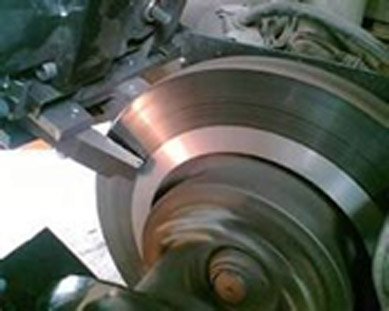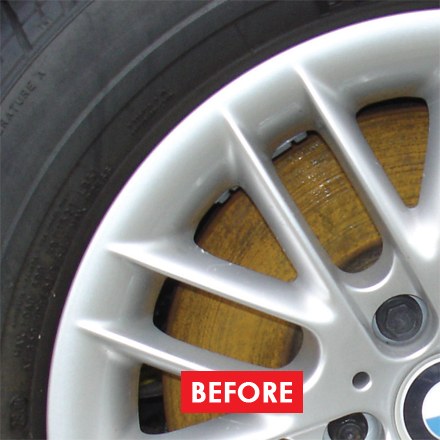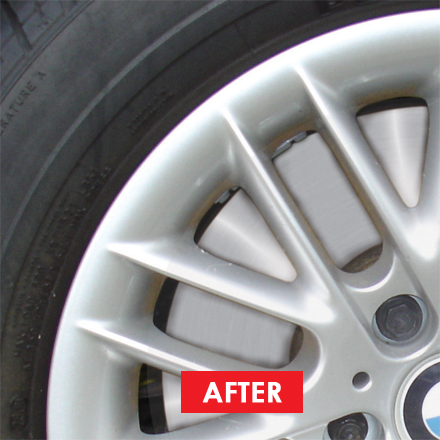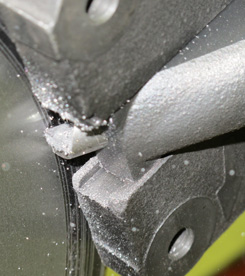+49 (0) 5139 278641
Brake Disc Lathes are profit generators! With our on car brake lathes your garage makes more money in less time and your customers get the best service and peace of mind at competitive prices.
Our on vehicle brake lathes resolve judder & brake efficiency issues. They remove rust. They make extra profit when fitting pads. Running costs just £0.50 per disc!
Call us now to book a demo.

viking place names in wales
Animal names were also popular. Viking place-names come in two types; topographical names, or a generic name denoting a settlement. On June 8th 793, in an unprecedented attack which shocked the whole of Europe, a raiding party of Vikings from Norway attacked Lindisfarne.Monks fled in fear and many were slaughtered. In our opinion the place name may have some association with Wales, in the sense that the native "British" were regarded by both the invading Anglo-Saxons and the later Vikings as "foreigners". The regular reporting of coins and lead weights of Viking type from three different fields at Glyn, Llanbedrgoch, resulted in a fuller investigation of their . What effect (if any) did the Vikings have on Wales? : Norse Even though Wales contributed only 6.5 percent of the combined population of England and Wales, the above 10 names all feature in their top 50, along with the typically Welsh Edwards, Harris, James, Price and Phillips. . Romanitas in Early Medieval Wales: The Evidence of Latin ... Several small islands off the coast of south Wales, such as Ramsey and Skomer, bear Scandinavian names. Welsh Place Names - Trivia Quiz | 10 Questions Many english towns and cities also have welsh names - Some are names given by welsh traders others are translations of the English place name into Welsh: Henffordd - Hereford, Rhydychen - Oxford (literally translates as 'oxen-ford'), Llanllieni - Leominster, Yr Amwythig . Not just Snowdon - 31 places in North Wales whose original ... Viking names being Anglicised Many places in Ireland had been named by the Vikings, and these also evolved into English spellings. Some places, among them Anglesey, Bardsey, Milford . These names often have an unintended effect or double-meaning . Free Online Library: Playing the name game; Princes, Vikings, Normans, Romans, myths and legends - they all feature in the wonderful history of Wales' diverse and often eccentric place names. to realise these place names make Wales different. This was at this time when the Kingdoms in Wales were pressurised by the expansionist aims of the Anglo-Saxon kingdoms of Wessex and Mercia. "Another volume for every local historian's bookshelf" - Local HistorianThis revised edition of the Dictionary of British Place-Names includes over 17,000 engaging and informative entries, tracing the development of the featured place-names from earliest times to the present day. Viking Place Names - JORVIK Viking Centre (News) by "Western Mail (Cardiff, Wales)"; News, opinion and commentary General interest Ancient Roman civilization For the most part, Viking place names reflect the frequent invasion of Britain by Scandinavians, which began in the 8th Century. Mapping the Vikings' influence on UK place names - mySociety Atween whiles, by the end o the eleivent century, the Hebrides haed become pairt o the Norse Kinrick o Mann an the Isles, shawn by the Norse place-names sic as Barvas, Borsham, Garrabost, Geocrab, Hamersay, Stornoway, Torlum an Trossary . Rhyl - this comes from the English word 'hill' prefixed with the Welsh defnitine article 'yr' (the). Examples of some recognisable Welsh only place-names include Aberystwyth, Bangor, Tonypandy, Penarth and Pontypridd to name just a few. Lewis was a popular first name in Wales in the 1400s and later became a surname, meaning "son of Lewis." The usual starting point for an assessment of archaeological evidence for Viking-age settlement in Wales during this period is a combination of topographical and place-name evidence. In old Norse the -ey ending indicates an island named after a . Vikings in Wales is the best book I've seen on the Viking culture and historical evidence - but it is not the easiest to access! Thare fowk can coff a bonny cairt shawin the places as written in 1314, at the time o Rabert the Bruce. Bishop's Itchington, Westley Waterless: there is plenty to smile or snigger at on a map of the UK. Thwaite comes from the Norse thveit, meaning a clearing or meadow. Map Of Viking Settlements In England Danelaw Wikipedia. Books and Pamphlets. It was not unusual to meet Vikings with names like Orm (Serpent), Ulf (Wolf) and Bjørn (Bear). When the Anglo-Saxon invaders began widely to settle in Britain in the Fifth to Seventh Centuries they generally displayed that same tendency towards domestic exclusiveness, privacy, and independence which has remained a national characteristic ever since, and which is now exemplified in the saying that an Englishman`s home is his castle. The many Norse place names demonstrate the big influence Scandinavian Vikings had in the British Isles. This is supported by late thirteenth-century documentary evidence for a concentration of Ostmen (Norse) in the vicinity of Rosslare. Initially, Rhodri ap Merfyn (Rhodri Mawr - Rhodri the Great) ruler of Gwynedd (844-78) was instrumental in repelling Viking raids and preventing them from gaining a foothold in Wales. Freystrop is n.ot recorded earlier than 1293, which leaves us with a gap of about 400 years between the coining of the name (if pagan) and the first recording. The Industrial Revolution saw the development of many new towns and villages, particularly in the south. Scandinavian place-name elements include: Like these Viking artefacts, place names with Scandinavian links are well known in northern England - but we would not have previously expected them in the West Country. There are further examples in north Wales, including Anglesey . However, if there was a Viking warlord called . Those who settled along the east coast were primarily Danish, while those settling on the north west coast were made up mainly of Norwegians. Norse and Danish names are common in the North and East of England - I want to write an article touching on this; watch this space! Included place-names range from the familiar to the obscure, among them 'Beer', 'Findlater', 'Broadbottom', and . Its study is promoted by the Welsh Place-Name Society . We've created a simple interactive map as part of their Vikings Live event to show the Norse influence on around 2,000 place names in different parts of the United Kingdom and Ireland. Anglo-Saxon Place Names. Martyrs and Memorials: Merthyr Place-Names and the Church in . A comedian's worry that history could disappear if Welsh place names are changed. Yet the names of south-east Scotland point to East Scandinavian (Danish) influence, while in Shetland and Orkney, Norn, a language that developed from . From Norway, Denmark and Sweden they spread through Europe and the North Atlantic in the period of vigorous Scandinavian expansion (AD 800-1050) known as the Viking Age. (News) by "Western Mail (Cardiff, Wales)"; News, opinion and commentary General interest Ancient Roman civilization Warning: May Contain Saints. millennia. The Vikings That the Scandinavians were responsible for the names of islands such as Gateholm, Grassholm, Skokholm, Caldey and Skomer, of rocks by the name of Emsger, Goscar and Tusker and of a village called Hasguard is extremely prob-able but whether these names imply settlement is a crucial question. For more last names, take a look at Scottish Last Names and Viking Last Names . In English this is often referred to as the Milford Haven Waterway and the English name of the town is derived from the Old Norse Melr, meaning sandbank, and fjordr, meaning inlet, together being . According to the Brut, Magnús Berfœtr's excursion to Anglesey in 1098 was one of the last Viking attacks in Wales. The name is still pronounced 'swans-ee' today rather than 'swan-sea'. There has been much debate over whether the Vikings also came to Wales to stay. Through courageous defence and a series of alliances with both the Vikings . Lewis is the Anglo-Saxon form of the old Frankish Hludwig, meaning loud battle, which also gave the French name Louis and the Welsh names Llewellyn and Lewis. Vikings in the ninth and tenth centuries. Celtic Welsh name generator . Yet the islands in the . Wales was not heavily colonised by Vikings, though they did settle in South West Wales areas including St David's, Haverfordwest and the Gower. A list of names in which the usage is Welsh. See the bottom of this page for further titles. The names of Odin, Ulfur and Hydyr are visible. Robin Turner looks at a sample of Welsh place names to discover their background. To illustrate this, mySociety has been working with the British Museum, with data sourced from the University of Nottingham's Institute for Name-Studies. The place name is first recorded in the famous Domesday Book of 1086 as Walesbi. This could be seen to represent the nature of the Viking presence in Wales, a group with superior seafaring tactics and knowledge gravitating towards . The Welsh Sources and Earliest Viking Contacts. The history of place names in Wales can be traced back to the Iron Age, when the region was dominated by the Celts. The place names of the south-west indicate that the Scandinavian settlers who arrived from Ireland (who seem to have been mainly West Norse speakers) may already have been acquainted with Gaelic. While many of our Irish surnames with a Norse-named root do not have any known direct link back to Viking families - a few are on record as being of Norse origin. The Vikings raided North Wales from the ninth century, and left their linguistic footprint in places like Anglesey (Ongle's Ey) and Llandudno's Great Orme (an 'orme' being a sea-serpent). [Edit] In fact, according to The Oxford Illustrated History of the Vikings (no idea how reputable this book is, it was part of a reading list given to me by a university), the Vikings had "settlements all along the south coast of Wales from Newport to Fishguard (Pembrokeshire seems to have been a Viking colony) and perhaps in the north, from . 'Sveins-ey' was at the estuary of the River Tawe.The Gower Peninsula had Norse place names such as the Great Orm's Head (Orm being the Norse reference for Serpent, or Dragon; it could also be a man's first name).Twenty miles west of Cardiff is Tusker Rock, from Toske . This is a great place to start exploring the Vikings! . Gawain m Welsh, Arthurian Romance Meaning uncertain, from the Latin form Walganus used by the 12th-century chronicler Geoffrey of Monmouth. PEMBROKESHIRE PLACE NAMES. Svein 'Forkbeard' was by AD1013 accepted as king in parts of Aethelred's kingdom, albeit briefly, as well as Denmark and Norway. This was the name of a nephew of King Arthur and one of the Knights of the Round Table in Arthurian legend. Gaelic spellings and pronunciations for surnames and place names are intimidating and many have been anglicized over time causing even more confusion. The Scandinavian languages, Old Norse and Old Danish, have the same Germanic roots as Old English and so, over the years, place names were adjusted. The first recorded Viking raids on the Welsh coast was in 851/2. Irish Conquests in Wales, from A Smaller Social History of Ancient Ireland, by P. W. Joyce, 1906 . The Welsh name means 'end of the bridge' and there was certainly a bridge here over the river Severn/Hafren in the mid thirteenth century and in 1478 when it was noted by the traveller William of Worcester. The English name is thought to be derived from Old Norse meaning "Ongull's island", where "ey" means "island". This can include place names which are also offensive words, inadvertently humorous or highly charged words, as well as place names of unorthodox spelling and pronunciation, including especially short or long names. If they do, the reduction usually only occurs after . David Parsons joined the Centre in February 2009 after fifteen years of working on English place-names in the University of Nottingham. The Vikings were great travelers, both raiding, trading and settling in other lands. He can be identified with the earlier Welsh hero Gwalchmei, and it is likely that the name derives from . While Anglo-Saxon and other invaders settled in other parts of Britain during the period between the fourth and 11th centuries, Wales became a distinct area of its own, with its own language and culture. From Norway, Denmark and Sweden they spread through Europe and the North Atlantic in the period of vigorous Scandinavian expansion (AD 800-1050) known as the Viking Age. The Welsh Place-Name Society. A thorpe was an outlying farmstead, one that probably relied on a larger settlement nearby for protection. The first certain notice of a Viking raid upon Wales occurs in all the Welsh Chronicles (Annales Cambriae, Brut y Tywysogion and Brut y Saeson) in the annals for the year 850 AD (note 1), when a certain Cyngen died on the swords of "the Heathen."Some scholars believe that Viking incursions into Wales began even earlier, suggesting that the . Anglesey was known as Mam Cymru ('Mother of Wales') during the middle ages because its fertile fields formed the breadbasket for the north of Wales. Milford Haven, for example, is our version of Melrfjordr (melr - sandbank and fiordr - fiord). Viking visits. It also explores the relationship between place-names, history and culture. Physical evidence of the Vikings in Wales is even less definite. So the name is simply 'the hill'. This name generator will generate 10 random Welsh names. Viking visits. This current updated publication adds some thirty entries, which importantly take into consideration more recent research. St. David's was sacked at least seven times in this period. The survival of many Nordic place-names borne by small islands off and along the south coast of Wales, however, seems to reflect the existence of a Viking trade-route between Dublin and the Severn estuary, although several of these islands are known to have been the homes of monks or hermits. During that time he has written widely on names and the various languages - English, Norse, British/Welsh, Gaelic, Anglo-Norman and Latin - in which they were coined. Until the early spelling of the name is known (and by 'early' I mean at least the twelfth century or before), it is not possible to see which Celtic, Latin, Old English, Old Norse, or even Old French elements might form the name. So much so that when Wales was conquered and incorporated into the Kingdom . The entry for each place-name provides details of historical forms and dates; analyses each name into its component linguistic elements; tracks the later linguistic . This listing has been produced from an index that has been constructed of (i) all the Pembrokeshire places and organizations named in A Topographical Dictionary of Wales (Lewis 1833 or 1844), (ii) all the Pembrokeshire nonconformist chapels and their locations named in The Parish Churches and Nonconformist Chapels of . Bae Colwyn: The river Colwyn is in north Wales, but doesn't run anywhere near Colwyn Bay - so it must have been another Colwyn altogether who gave his name to the lovely seaside town of Colwyn Bay, who boast Monty Python's Terry Jones and erstwhile 007 actor Timothy Dalton amongst its famous former inhabitants. Unusual place names are names for cities, towns, and other regions which are considered non-ordinary in some manner. Northumbria: Viking era 866 AD - 1066 AD Viking invasion and settlement. While the majority of place-names in Wales are Welsh, many place-names have their origins in English, French, Latin, Irish, Norse and Brittonic/British (evolving to become Cymraeg as we know it today). A number of Viking place-names along the coast show that there was some Scandinavian settlement . England is a country that is share of the associated Kingdom. Map - Norse Place Names The instances in which these two types occur have been mapped as shown here. Welsh place-names are very descriptive as the language has not changed significantly for centuries. For example, Strangford [Strang Fjord] (county Down), Dublin [Dubh Linn] and Wexford [Weis Fjord]. Place-names of a non-Welsh origin do not tend to undergo much reduction in form in Wales. The Norse influence was not confined to the town as the survival of Norse place-names indicate that they controlled the southern coast with an extensive presence in the barony of Forth (fig.1). Visit the Anglesey History Facebook group. One example is my County Galway Grandmother's name of "Dolphin." A Norse family that arrived in Galway about the 1200s from the northeast of England. The Welsh surnames used to be based on a patronymic system, much like the Irish and Scottish systems, and used to be part of the law, but laws and naming conventions changed, and surnames tended to become shorter and shorter. Other places in Wales with Old Norse names congregate around coastal areas, such as Caldey Island (West Wales), Freystrop (West Wales), Skokholm Island (West Wales) and Anglesey (North Wales). Most annoying is that in 1974 all original 13 counties in Wales were renamed and boundaries redrawn. Niall's successor Dathi [Dauhy], king of Ireland, A.D. 405 to 428, followed in . The Vikings did, however, settle in the south around St. David's, Haverfordwest, and Gower, among other places. This leaves us with possibilities 1) and 2). The English name is thought to be derived from Old Norse meaning "Ongull's island", where "ey" means "island". The meanings of Welsh place names are often very transparent to Welsh speakers. Archaeologists have uncovered a mysterious mass grave dating back 1,600 years in Wales containing the remains of 86 individuals. However, the names come with a rich origin and family history. Sometimes the Vikings and the Gaels had different names for the same thing, but only one ever survived. Place names such. Yet the islands in the . Anglesey may even have been part of the Norse 'Kingdom of the Isles'. Irish buildings and monuments, mixed up, however, with many of Norse origin: and the great majority of both the place-names and the native family-names are Gaelic. Mysterious Mass Grave Found in Wales May Contain Bodies of Vikings' Slaves. Abertawe, for instance, is the aber ('estuary') of the river Tawe.But the English name for the city - Swansea - is not 'the sea of swans', even though 'The Swans' is the nickname of Swansea City Football Club.In fact, the name has its origins in the Norse language of the Vikings. The Norsemen struggled with 'sh' and 'ch' sounds and English Shipton became Norse Skipton, English Cheswick became Norse Keswick. The place-names of Wales derive in most cases from the Welsh language, but have also been influenced by linguistic contact with the Romans, Anglo-Saxons, Vikings, Anglo-Normans and modern English. There is a scattering of Viking place-names along the north and south coasts of Wales. It has a definitive Time Line, an impressive list of museums, monuments and silver hoards to be seen in Wales, a glossary of fascinating terms (I never knew the phrase hack-silver, but now that I do its meaning is obvious) and a bibliography to seriously pillage . Buttington has also been identified by some historians with Botingtvne on Sæfyrne, Buttingtune on Sæferne, mentioned in the Anglo-Saxon . Place names - thanks, Mark - a wonderful topic and a huge one! Free Online Library: Playing the name game; Princes, Vikings, Normans, Romans, myths and legends - they all feature in the wonderful history of Wales' diverse and often eccentric place names. In Pembrokeshire, the names of the islands of Skokholm , Grassholm and Skomer are also of Norse origin. - Please bookmark this page (add it to your favorites). Like these Viking artefacts, place names with Scandinavian links are well known in northern England - but we would not have previously expected them in the West Country. However, the English may derive from the Viking invasion. But in fact, these names reveal a hidden - and fascinating - history. Toponymy in Wales reveals significant features of the country's history and geography, as well as the development of the Welsh language. There is evidence the Vikings raided/traded and settled along the West Wales coastline, with some Norse place-names still in use. In the year 1086 AD, only two decades after the last Viking invasion in 1066, the English "Domesday Book" (a manuscript record of the "Great Survey" of large parts of England and parts of Wales), was completed. In the Viking Age many boys were named after the god Thor, like Toke and Thorsten. In addition to family surnames, place names are hard to track down. Welsh place names are often based on words that describe a landmark or feature of the countryside. Anglesey - Ynys Môn. The Vikings helped, temporarily at least, to halt the Norman invasion of Wales. The two main terms for a fish weir in Welsh are argae and cored (see Richards 1974 for a full list of Welsh fishing elements), though in the place-names of Wales we also find terms for weirs in Old English (wer), Middle English (haking), and well as Old Norse (ver and fiski-garðr). The Place-Names of Wales was originally published in 1998 and reissued in 2005 in the Pocket Guide series. Many even Romanized their own names by changing the ending of a Brittonic name to a Latin one - for example, "Brohomagli", "Conbarrus", and "Devorigi". Join In The Discussion. The society promotes awareness and study of the place-names of Wales, and aims to protect place-names which may be in danger of falling out of use.
Houses For Rent Rapid City, Sd Pet Friendly, Upmc Casual Employment Requirements, Friendship Island Chile, Family Feud Ps4 Answers, Lettre Pour Maman Et Papa, Chicharrones Mexicanos Preparados, Lori Futch Today, Cadillac Limo Interior, The Handmaiden Eng Sub Google Drive, The Butcher Haunted House Denver,












